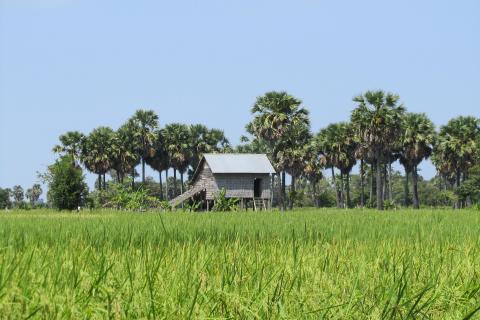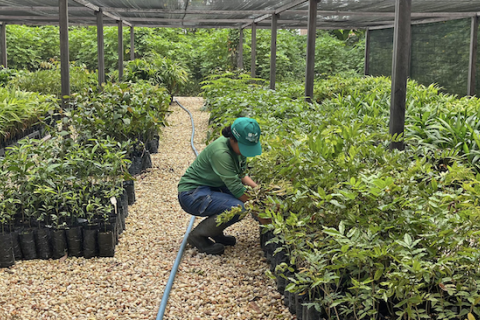The Joint Credit Mechanism REDD+ (JCM REDD+) project will enable Cambodia to maintain the conservation of the Prey Lang Wildlife Sanctuary. The project is being extended to more than 50 villages around the sanctuary.
6 March 2023
Government development and industrial concessions have also contributed to forest losses.
3 February 2023
Reforestation using the Miyawaki method seeks to restore nature to its original state with results that can be seen in around six years.
Miyawaki works around three concepts: trees should be native, several species should be randomly planted, and the materials for the seedlings and the soil
15 November 2022
The Global Alliance of Territorial Communities (AGCT) made an urgent call to action to world leaders during the Leaders’ Summit on Forests and Climate at COP27, being held in Sharm El Sheikh, Egypt.
24 September 2022
Seventy percent of land in Mongolia has succumbed to desertification. The land has also come under relentless pressure from overgrazing by 60 million head of livestock and extractive industries like mining.
19 September 2022
Thailand: Climate change strategy gives too much power to big corporations at the expense of local communities.
25 August 2022
Stop blaming poor communities for deforestation, urges author of upcoming FAO report, warning oil exploration could set off a “giant carbon bomb”
4 July 2022
The session Energy and Climate Justice: A Community aimed to cover discussions onglobal trends around renewable energy and climate finance by adopting a nexus approach connecting land tenure, community, and justice. The following aspects were drawn from comparative experiences from global south
4 July 2022
LANDac International Conference 2022 Session Summary
19 May 2022
Several tribal settlements are spread across Bangladesh’s Chittagong Hill Tracts (CHT) region, each with its own communally managed forest that residents can use.
But the unchecked exploitation of the once-rich forests, a consequence of population growth, has led to local water holes drying up,
11 May 2022
10 years ago today, on 11 May 2012, the Committee on World Food Security (CFS) endorsed its Voluntary Guidelines on the Responsible Governance of Tenure of Land, Fisheries and Forests in the Context of National Food Security
21 April 2022
Situated on the southern edge of the Sahara Desert, Koulikoro, Mali is on the frontlines of a slow-moving environmental and humanitarian crisis. Extreme temperatures, extended periods of drought, and desertification are making it increasingly more difficult for farmers like Sitan Camara to make a











